Understanding NFT Royalties: How Creators Earn on Resales
NFT Royalty Calculator
This tool helps you understand how much a creator could earn from royalties when an NFT is resold. Enter the sale price and royalty percentage to see the potential earnings.
Royalty Breakdown
Sale Price: $0.00
Royalty Percentage: 0%
Royalty Amount: $0.00
Seller's Proceeds: $0.00
Imagine creating a piece of digital art, selling it for a few thousand dollars, and then watching it flip for millions later-while you automatically pocket a slice of each resale. That exact scenario happened when Beeple digital artist who helped bring NFTs into the mainstream earned a $660,000 royalty after his "Crossroads" NFT sold for $6.6million. The magic behind that payout is NFT royalties, a system that lets creators earn on every secondary market transaction without lifting a finger.
Quick Takeaways
- Royalties are coded into a smart contract when an NFT is minted.
- Creators set a royalty percentage (usually 5‑10%) that applies to every resale.
- When a secondary marketplace platform where NFTs are bought and sold after the initial mint processes a sale, the contract automatically sends the royalty to the creator’s wallet.
- Enforcement varies: some platforms make royalties mandatory, others let buyers opt out.
- Legal frameworks are still catching up, so creators often rely on community‑driven standards.
How NFT Royalties Work
At the heart of the system is a smart contract self‑executing code stored on a blockchain that enforces predefined rules. When an artist mints an NFT, the contract stores two critical pieces of data:
- The creator’s wallet address.
- The royalty percentage the share of each resale price the creator will receive, typically set between 5% and 10%.
Because the contract lives on a blockchain decentralized ledger that records every transaction permanently, the royalty rule is immutable. When a buyer purchases the NFT on a secondary marketplace any platform that facilitates NFT resales after the initial mint, the smart contract calculates the royalty amount, transfers it instantly to the creator’s address, and sends the remainder to the seller. All of this happens in seconds, with a transparent on‑chain record.
Choosing a Royalty Rate
Artists decide the rate during minting. While 5% is common for emerging creators, high‑profile artists often go for 10% or more. The choice balances two forces:
- Marketability: A higher royalty can deter buyers who want to maximize profit on flips.
- Income potential: A lower rate might attract more sales, but each resale yields less revenue for the creator.
Many platforms let creators adjust the rate later, but changing it usually requires minting a new contract, which is why most artists set it once and stick with it.
Real‑World Impact: Beeple’s $660,000 Royalty
In February2021, Beeple the digital artist behind the record‑breaking NFT sale sold "Crossroads" for $6.6million on a secondary market. The underlying smart contract specified a 10% royalty. As soon as the transaction closed, the contract routed $660,000 directly to Beeple’s crypto wallet-no invoicing, no middleman, no delay. This example illustrates the massive passive‑income upside for creators whose work appreciates over time.
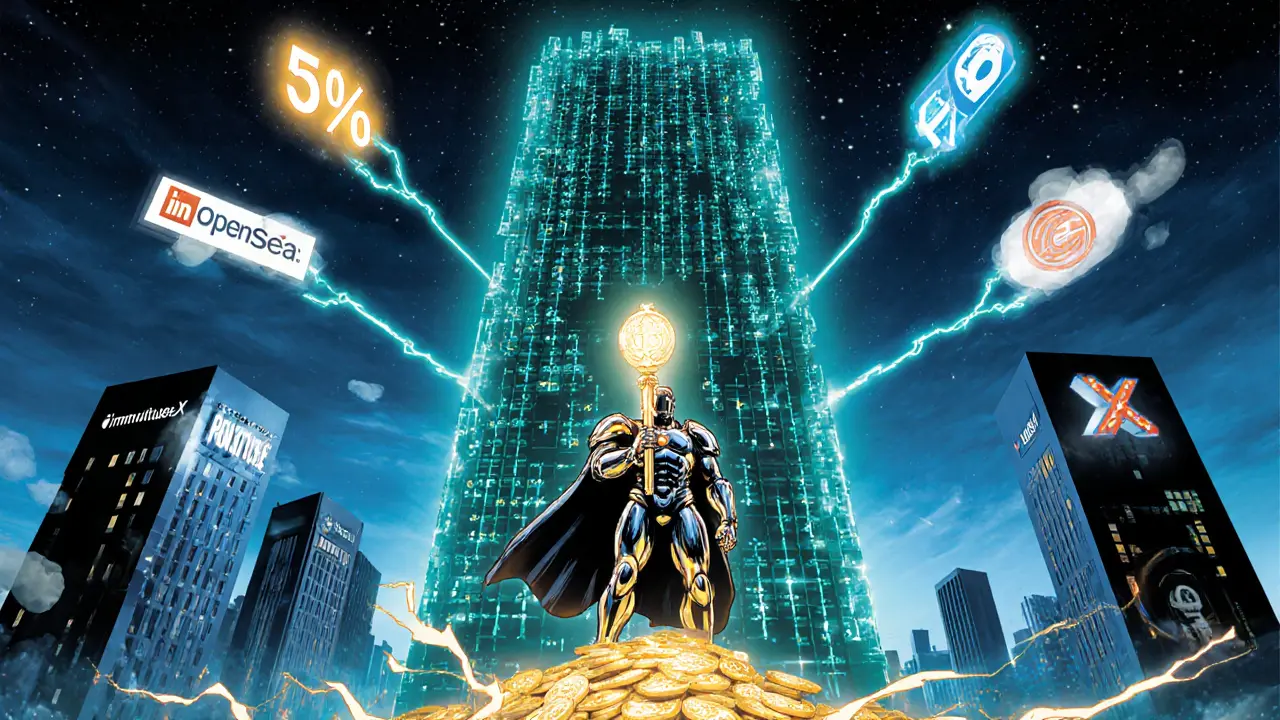
Marketplace Policies: Mandatory vs. Optional Royalties
Not every platform treats royalties the same way. Some enforce the royalty rule as part of their transaction flow, while others allow buyers to opt out, hoping to attract higher‑volume traders. Below is a snapshot of how major marketplaces handle royalties as of 2025.
| Marketplace | Royalty Policy | Typical % Allowed | Enforcement Mechanism |
|---|---|---|---|
| OpenSea | Mandatory (default), can be disabled by creator | 5‑15% | Contract‑level split, enforced by platform |
| LooksRare | Optional (buyer can waive) | 0‑10% | Voluntary payout prompt |
| Magic Eden | Optional (seller can opt‑out) | 0‑12% | Manual royalty checkbox |
| ImmutableX | Mandatory (community‑enforced blacklist) | 5‑10% | Smart‑contract escrow, blacklist for non‑compliant platforms |
| X2Y2 | Optional (buyer choice) | 0‑8% | Optional royalty routing during checkout |
Creators who prioritize guaranteed income often gravitate toward platforms like ImmutableX a layer‑2 solution that enforces royalties via a community blacklist. Others accept the risk of optional royalties in exchange for higher traffic and lower fees.
Legal and Enforcement Challenges
While the code executes automatically, the system lacks legal teeth. Legal enforcement the ability to compel parties to honor royalty terms through courts or regulations is still evolving. Experts at law firms such as White&Case note that existing intellectual‑property statutes don’t automatically cover blockchain‑based royalty splits. As a result, if a marketplace chooses to ignore the royalty clause, the creator’s recourse is limited to suing the platform-a costly and uncertain path.
Some jurisdictions are beginning to draft resale‑right regulations that could extend to NFTs, but until those rules become widespread, creators must rely on platform policies and community pressure to protect their income streams.
Practical Tips for Creators
If you’re minting NFTs today, here are some steps to maximize royalty earnings:
- Pick a royalty‑friendly blockchain. While Ethereum remains dominant, layer‑2 solutions (e.g., ImmutableX a scaling solution built on StarkWare that supports enforced royalties) often have lower fees and stricter royalty enforcement.
- Choose marketplaces that honor royalties. Check the platform’s policy page before listing. Prioritize those that list royalty enforcement as a core feature.
- Communicate your royalty rate. Include the percentage in the asset description so buyers know what they’re agreeing to.
- Consider a royalty‑backed token. Some creators issue a separate ERC‑20 token that pays out a share of future royalties, giving collectors a tradable stake.
- Stay informed about legal trends. Follow updates from IP law blogs and community forums; new regulations could affect how royalties are recognized in court.
By treating royalty settings as part of your overall business strategy-not just a technical add‑on-you’ll be better positioned to earn sustainably as your work appreciates.
Future Outlook
The next few years will likely see two parallel developments:
- Standardization. Industry groups are drafting royalty‑standard EIPs (Ethereum Improvement Proposals) that would make royalty data readable across all marketplaces, reducing fragmentation.
- Enhanced enforcement. New contract patterns, such as on‑chain escrow that locks resale proceeds until royalty distribution is confirmed, could make “optional” royalties technically impossible without breaking the transaction.
Until those standards become universal, creators will need to stay agile-monitor platform changes, diversify where they list, and leverage community‑driven tools like blacklists that penalize non‑compliant marketplaces.
Frequently Asked Questions
What exactly triggers an NFT royalty payment?
A royalty is triggered whenever a secondary sale the transfer of an NFT from one owner to another on a marketplace is completed. The smart contract reads the sale price, calculates the preset percentage, and sends that amount to the creator’s wallet automatically.
Can I change the royalty percentage after minting?
Generally no. The royalty rate is hard‑coded into the NFT’s contract at mint time. To adjust it you’d need to mint a new token or deploy a new contract version, which means the original token’s royalty stays unchanged.
Do all blockchains support NFT royalties?
Ethereum has the most mature royalty standards, but other chains like Flow, Tezos, and Solana also offer royalty features, though enforcement rules differ by marketplace.
What happens if a marketplace ignores the royalty clause?
Technically the smart contract still tries to send the royalty, but if the platform bypasses the contract (a rare but possible scenario), the creator may have to pursue legal action or simply avoid that platform in the future.
How are royalties taxed?
Royalties are usually treated as ordinary income in most jurisdictions, so you’ll need to report the value in your local currency at the time of receipt. Consulting a tax professional familiar with crypto is advisable.

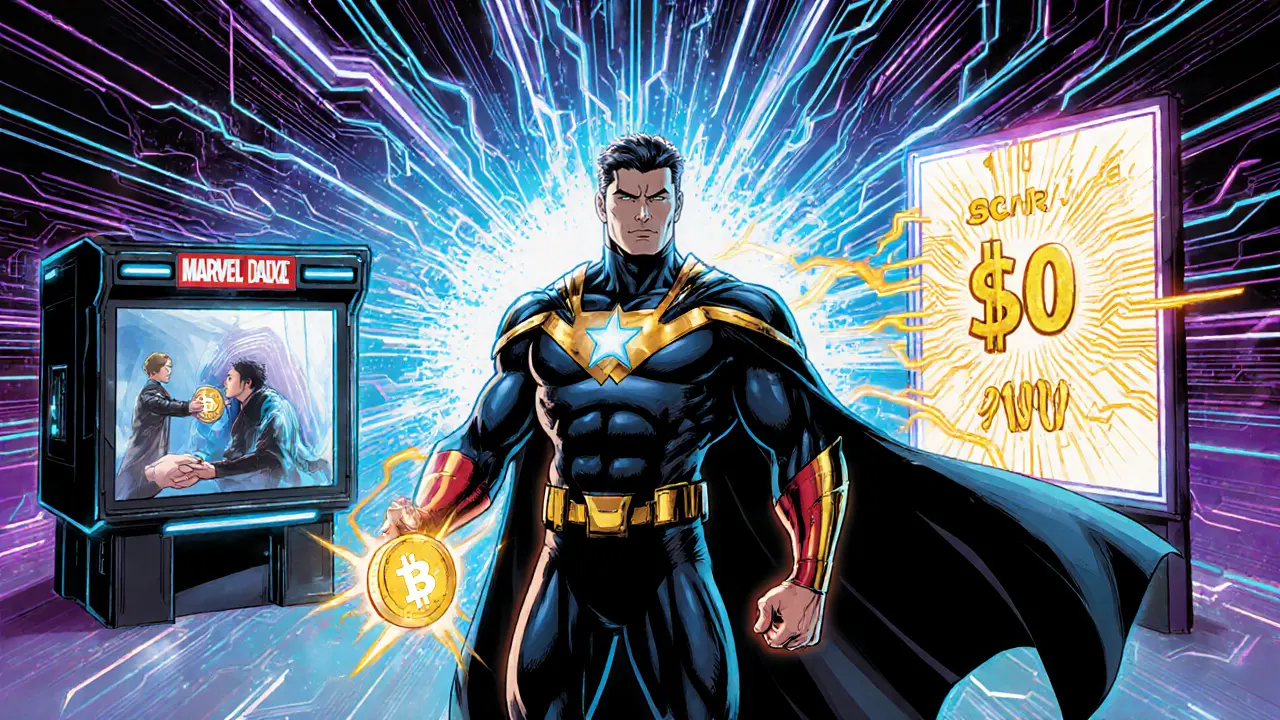
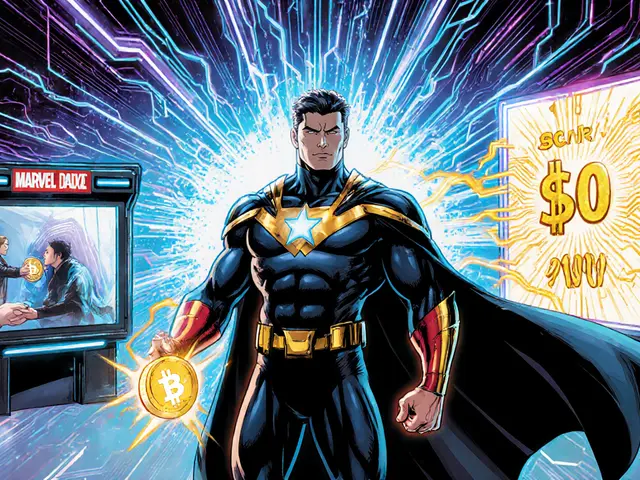
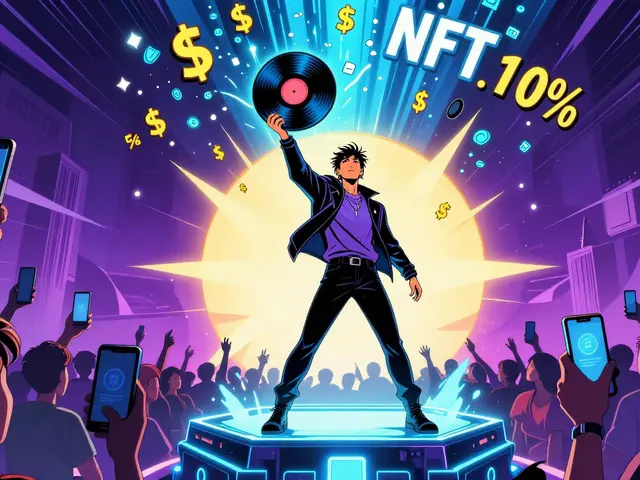

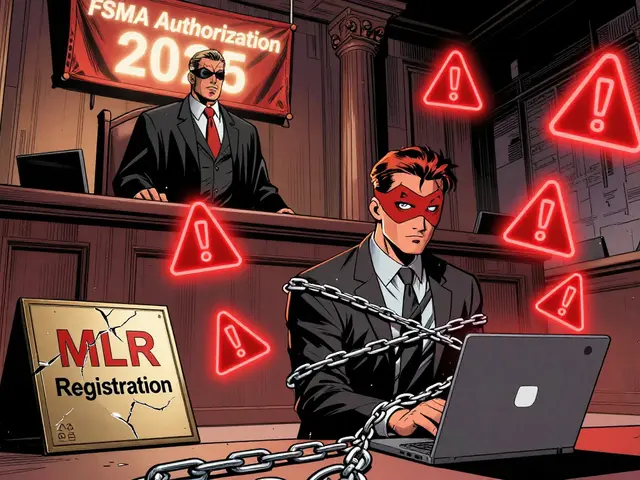

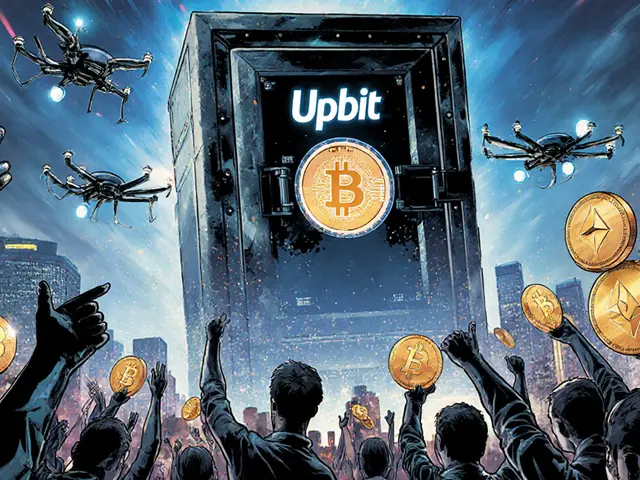

Nice overview, but let’s be real – most creators are still figuring out how to set that 5‑10% without scaring off speculators 😂. If you mint with a higher royalty, you might lose half the buyers, so play it like a chess game 🎲. Keep it chill, test the waters, and remember the community will bite you back if you’re greedy.
When we speak of royalties we are, in effect, confronting the very ontology of value in a decentralized ledger, a concept that forces us to reimagine the relationship between creator and consumer.
The smart contract, immutable by design, becomes a philosophical judge that adjudicates each resale as an act of recognition.
Yet the law, as we know it, lingers in the background, impotent to enforce a code that exists outside its jurisdiction.
This dissonance raises the question: can a piece of code truly replace the moral contract historically enforced by guilds and patronage?
The answer is layered, because while the code executes automatically, the social acceptance of that execution is still mediated by marketplace governance.
Platforms that choose to honor royalties embed the code into their user experience, thereby granting the contract a veneer of legitimacy.
Conversely, optional‑royalty platforms effectively undermine the code, showing that the system’s strength relies on collective adherence.
The Beeple example demonstrates the upside-a ten percent split on a six‑point‑six million sale yields a six hundred‑plus thousand payday-yet it also illustrates the rarity of such compliance.
Most creators receive far smaller returns, because the average resale volume is modest and many marketplaces simply bypass the royalty provision.
In jurisdictions where resale rights are being debated, the blockchain offers a glimpse of a future where royalty enforcement could be codified into statutory law.
Until then, creators must navigate a patchwork of policies, treating each marketplace as a separate jurisdiction of its own.
The strategic recommendation, therefore, is to prioritize platforms with mandatory royalty enforcement and to diversify listings across chains that support royalty standards.
Moreover, consider issuing a royalty‑backed token, a novel approach that shares future earnings with collectors and creates an additional market for your work.
Finally, stay vigilant: as the technology evolves, new contract patterns may render “optional” royalties technically impossible, reshaping the incentive structure for both artists and traders.
Great summary! If you’re just starting out, set a modest 5 % royalty and watch how it performs. You can always adjust on future drops, and the steady trickle adds up over time.
Love the optimism here keep it simple and steady
When choosing a blockchain, consider both transaction costs and royalty enforcement. Ethereum has robust standards, but layer‑2 solutions like ImmutableX reduce fees and often lock royalty rules at the protocol level, making it harder for a marketplace to opt out. Reviewing the marketplace’s API documentation for royalty callbacks will save you headaches later.
Remember, a clear royalty rate in the description builds trust with buyers.
Oh sure, because everyone loves paying extra every time they flip a meme. If you think 10 % will scare them away, maybe you’ve never seen a collector chase a hype piece like a dog after a ball.
In the grand tapestry of digital art, royalties are like the hidden threads that keep the whole piece from unraveling, even if some platforms try to cut them out. It's a delicate balance between creator rights and market freedom, and we all play our part in stitching it together.
Enough talk – enforce mandatory royalties or you're just feeding the speculators.
Solid advice on diversifying across marketplaces. By listing on both OpenSea and ImmutableX you hedge against platform‑specific policy changes while keeping your royalty income steady.
Another glossy guide that pretends royalties are a silver bullet, yet ignores the gritty reality of market manipulation.
Imagine the artist as a modern alchemist, turning each resale into a gleam of gold that trickles back into their creative cauldron. By setting a 7 % royalty, you’re not just extracting a fee; you’re cultivating a sustainable ecosystem where each subsequent collector becomes a patron of the original vision. This approach, however, demands a keen awareness of buyer psychology – too high and you risk alienating the very audience you need to sustain momentum. Balancing that scale is an art in itself, much like the work you’re minting. Moreover, the choice of blockchain acts as the crucible in which these royalties are forged; a low‑fee layer‑2 can make the difference between a thriving royalty stream and a trickle that evaporates under gas costs. In practice, you’ll want to monitor marketplace dashboards for resale volume, adjust your royalty percentage judiciously, and perhaps experiment with tiered royalty structures that reward early adopters more generously. The endgame is a self‑reinforcing loop where the creator, the collector, and the platform all gain from each transaction, turning the NFT space into a vibrant, mutually beneficial marketplace.
Wow, another "deep dive" that rehashes the same Beeple numbers we’ve seen a thousand times. Newsflash: most creators won’t make half a million on a flip.
The guide covers the basics well, but it could benefit from a deeper look at emerging royalty standards beyond Ethereum.
Honestly, the whole royalty hype is a circus – flashy lights, loud music, and the audience being roped into paying for the privilege of ownership while the real profit goes to the ringmasters.
Really??; The article claims royalties are “automatic,” yet fails to mention the *significant* variance in marketplace compliance; this omission is puzzling; creators must stay vigilant; otherwise, they risk being short‑changed!;
I hear you – navigating royalties can feel overwhelming, but remembering that every small royalty adds up can keep you motivated.
Love the vibe here 😍! Royalties are like a secret bonus that keeps on giving 💰. Keep sharing these tips!
Did you know some big marketplaces might be secretly colluding to ignore royalty contracts? It’s like they’re running a hidden operation to keep the cash flowing to themselves.
Honestly, I think the obsession with royalties is overblown – most collectors don’t even notice, they just want the bragging rights.